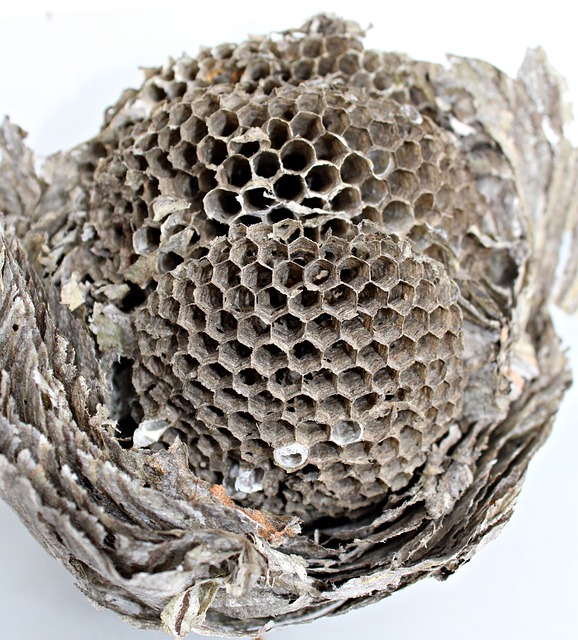Wasp infestations pose health risks and require strategic wasp infestation treatment. Understand their attraction to food, water, and shelter for effective control. Identify entry points, nesting sites, and hiding spots like gaps around windows, doors, wall cracks, plants, attics, and paneling. Seasonal variations dictate different approaches: spring/summer demand prompt prevention due to heightened activity; fall/winter see reduced activity but require attention in milder weather. Implement proactive measures like inspections, sealing entry points, cleanliness practices, and regular treatment. For severe or persistent issues, consult professionals with specialized equipment for tailored solutions and maintenance plans.
Wasp infestations can turn from annoying to hazardous, quickly. Understanding their behavior and causes is key to effective wasp infestation treatment. This guide delves into the science behind these stinging pests, exploring common areas they inhabit and seasonal trends that influence their activity. We offer practical tips for proactive prevention and outline signs requiring professional wasp control services. Armed with this knowledge, property owners can implement tailored strategies to maintain wasp-free spaces throughout the year.
Understanding Wasp Infestations: Causes and Common Areas
Wasp infestations can be a nuisance and pose potential health risks, making understanding their causes and common areas essential for effective wasp infestation treatment. Wasps are attracted to properties by sources of food, water, and shelter. Common entry points include gaps around windows, doors, and vents, as well as cracks in walls or foundations. They also favor areas with abundant plant life, as it provides nesting sites and a ready supply of insects for feeding.
In gardens, wasps might nest near fruit trees, compost piles, or even play structures. Inside homes, they often take up residence in attics, wall cavities, or behind paneling, where they can establish colonies unnoticed until the infestation becomes severe. Prompt identification of these entry points and common habitats is crucial for implementing effective wasp control measures as part of your ongoing maintenance plans.
Seasonal Considerations for Effective Wasp Control
In terms of wasp infestation treatment, seasonal variations play a significant role in determining the effectiveness of maintenance plans. During spring and summer, wasps are most active, nesting and reproducing at an accelerated rate. This period requires heightened vigilance and proactive measures to prevent infestations. Regular inspections and timely treatments can significantly reduce the risk of severe wasp presence.
In contrast, fall and winter offer a temporary respite from wasp activities as they prepare for hibernation. However, it’s crucial to remember that wasps can still be active during milder seasons, especially if there are sheltering structures around the property. Implementing ongoing maintenance strategies throughout the year—including sealing entry points, maintaining cleanliness, and using targeted treatments—ensures a wasp-free environment.
Proactive Measures: Prevention Strategies to Avoid Wasp Infestations
To prevent wasps from taking over your property, it’s crucial to implement proactive measures and adopt effective prevention strategies. Regular inspections are key; check for any signs of wasp nests or activity around the building, especially during spring and summer when they’re most active. Keep an eye out for common entry points like gaps in walls, windows, doors, or ventilation systems—sealing these openings can significantly reduce their access points.
Maintaining a clean environment is another powerful defense against wasps. Dispose of food waste responsibly, regularly empty garbage bins, and ensure fruit trees are harvested promptly to avoid attracting them with ripened fruits. Additionally, keeping greenery well-trimmed around the property reduces potential nesting sites. Regular wasp infestation treatment, such as professional pest control services, can also be a proactive step to deter and manage these pests effectively.
Professional Assistance: When to Call in Expert Pest Control Services for Wasp Infestation Treatment
If a property owner notices a persistent wasp problem, it’s time to consider professional assistance for wasp infestation treatment. While DIY methods can be employed for minor infestations, complex or severe cases require the expertise of pest control professionals. These experts are equipped with specialized equipment and knowledge to handle wasps effectively and safely. They offer tailored solutions, ensuring the right chemicals and techniques are used to eliminate the problem at its source.
Calling in a professional service is particularly crucial when dealing with aggressive wasp species or large colonies. Pest controllers can identify nest locations, providing targeted treatment options. Regular maintenance plans, often offered by these services, involve periodic inspections and treatments, preventing future infestations. This proactive approach is key to maintaining a wasp-free environment, especially for commercial properties where pest control is a legal requirement.
Maintaining a wasp-free environment is crucial for property safety and comfort. By understanding the causes of infestations, implementing seasonal control measures, adopting proactive prevention strategies, and knowing when to seek professional assistance, you can effectively manage wasps. These comprehensive approaches ensure optimal wasp infestation treatment, providing peace of mind and a secure living or working space.
